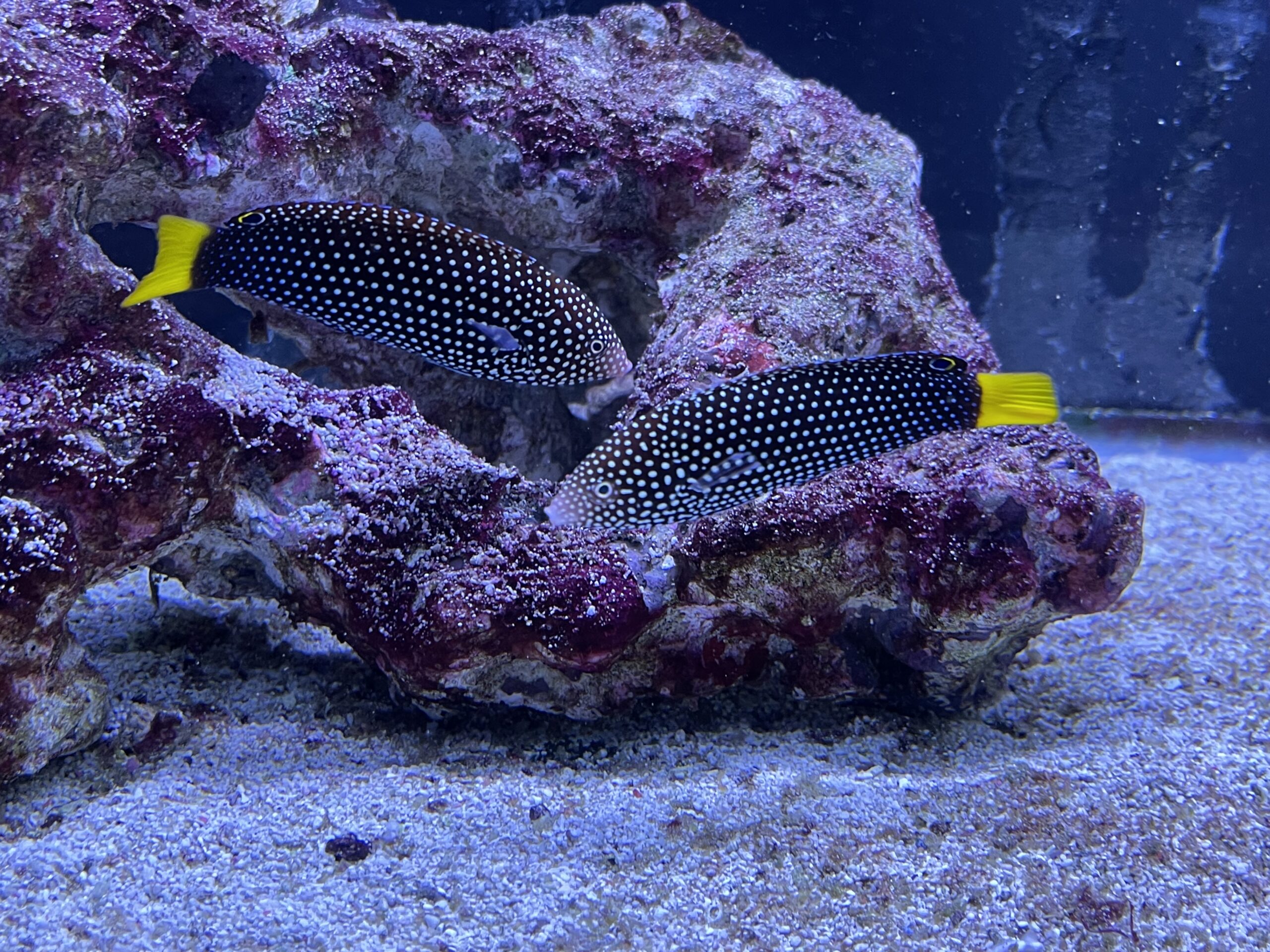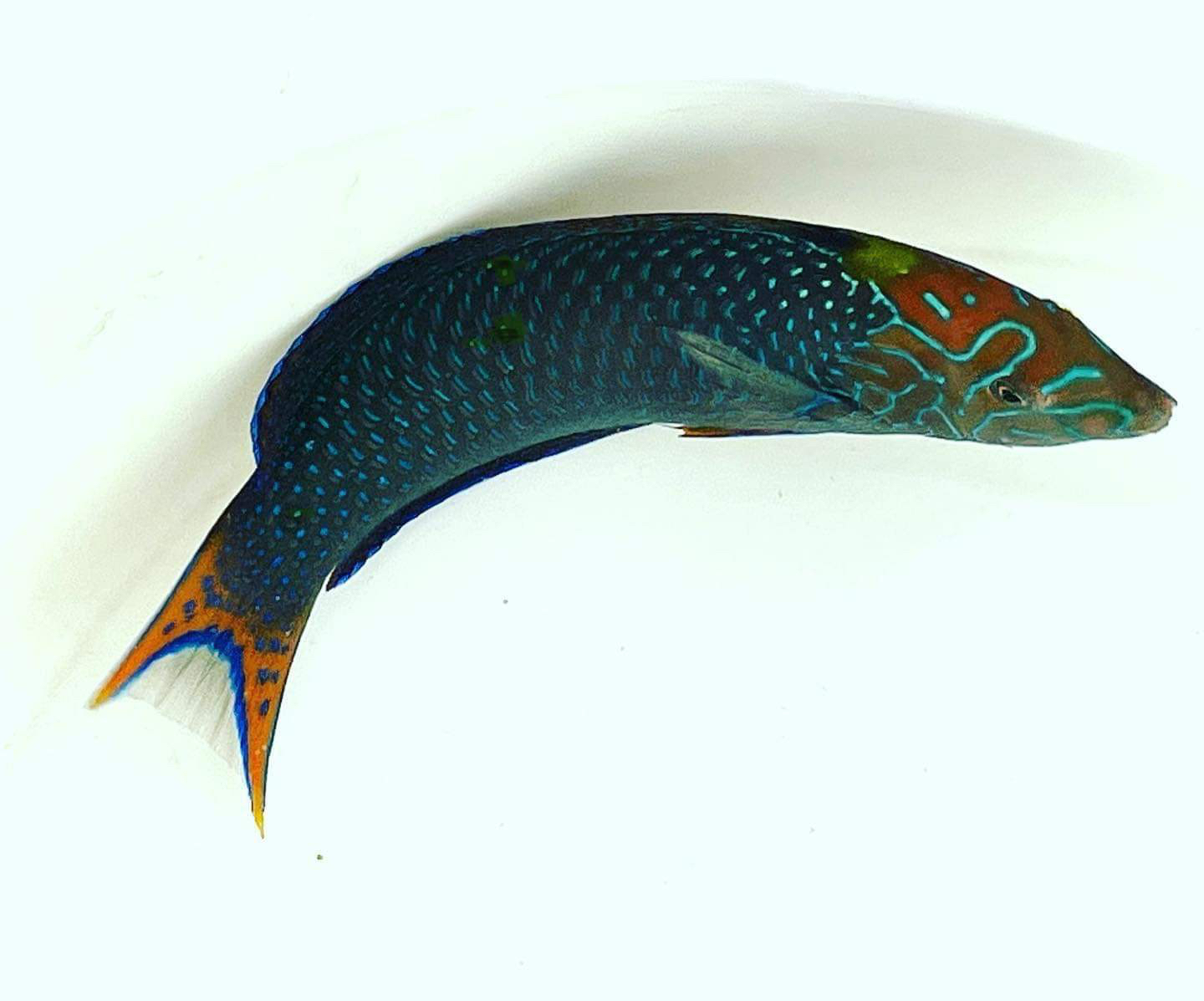Advanced Aquarium Consultancy in Essex, England has acquired a rare male Yellow tail tamarin wrasse, Anampses meleagrides. The Anampses genus contains some of the most desirable of all wrasses including A.femininus and A.lennardi to name just two stand out species, with A.neoguinaicus, twistii, meleagrides, melanurus, lineatus and chrysocephalus all being super pretty, super desirable fish too. We hardly ever see any in male coloration though, until this stunning male turned up at AAC.
Also known as the Speckled wrasse, Spotted wrasse or just simply Yellow tail wrasse, Anampses meleagrides, 999 times out of 1000 is available in its female or juvenile form, with an elongated jet black body, bright yellow tail, and white spotted patterning that would outdo a Gem tang, with two prominent eye spots on the dorsal and anal fins to put off would-be predators. It’s a stunner, can be kept in groups, and after initially diving into the sand and presumed missing for days they emerge as bold, active fish, constantly on the lookout for food. If this was all that wrasse could be we wouldn’t like it any less and it remains one of our all-time favourites, but we did a double take when we saw AAC’s picture of a very rarely seen mature male.
“I’ve seen hundreds of Yellow tails in my time,” AAC owner Paul Hughes told Reef Builders. “But often only females are imported and I’ve only ever had one change to male in my tank. I’ve seen plenty of Red tail and even Femininus males but even I had to look twice when I received it.”
Photographed briefly before entering quarantine, the male Yellow tail wrasse is a different beast altogether, larger, longer in the snout, and with a turquoise pattern on the face, and arrow tip tail. What’s more, the male pattern can further evolve in a phenomenon called nuptial coloration, where they undergo rapid short-term color changes as part of social signaling during courtship and mating. The featured male measures 6’/15cm but male Yellow tails are capable of attaining 8”/20cm in the wild, so we may yet see some further pattern migration in the male pictured.




